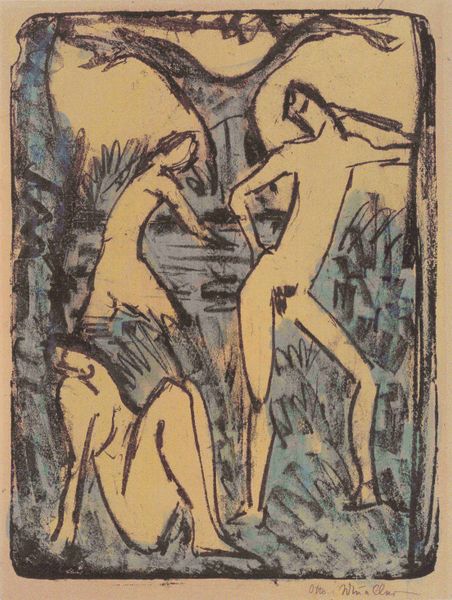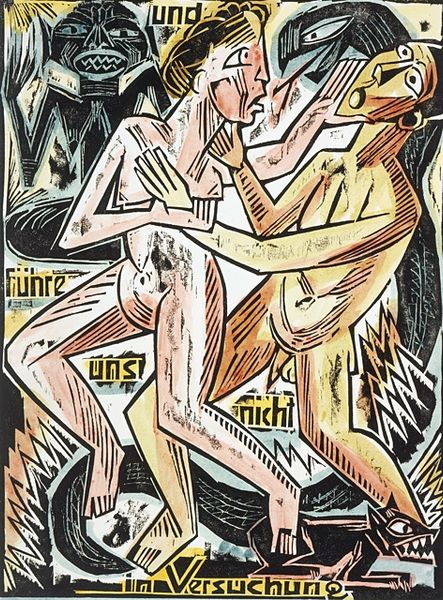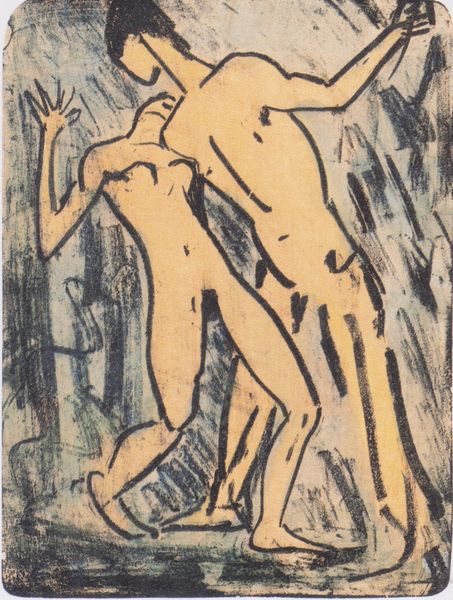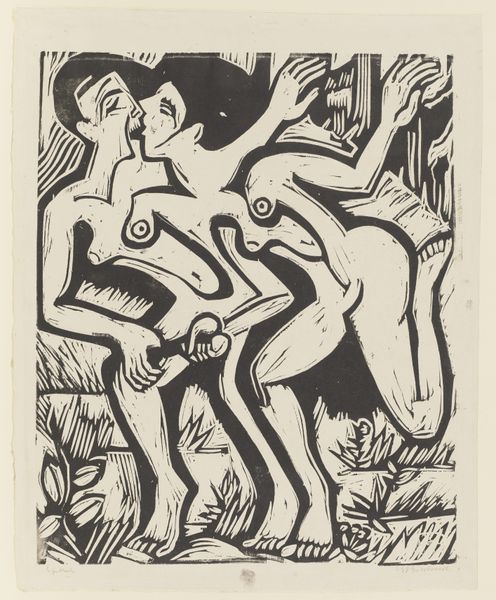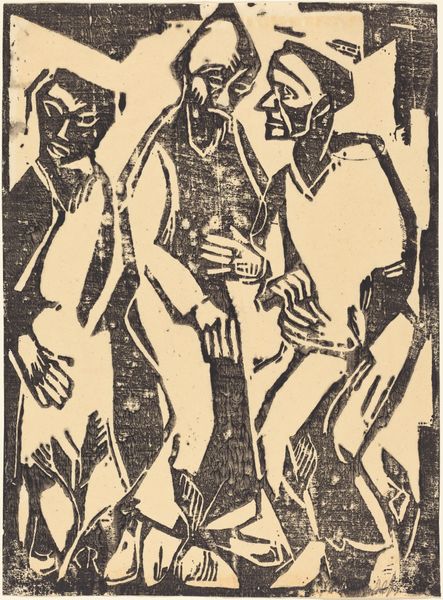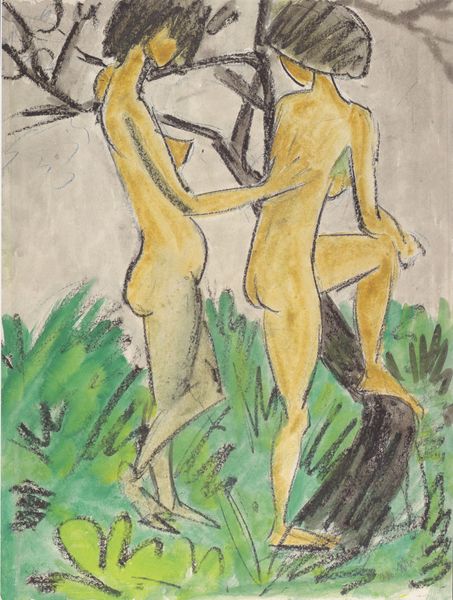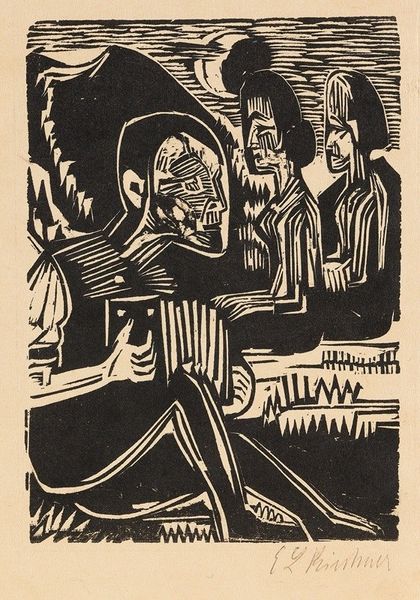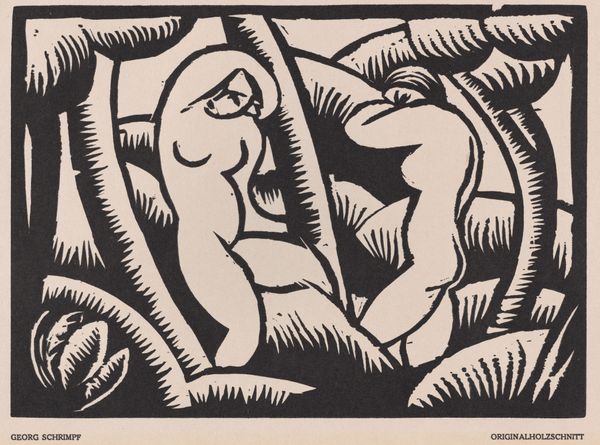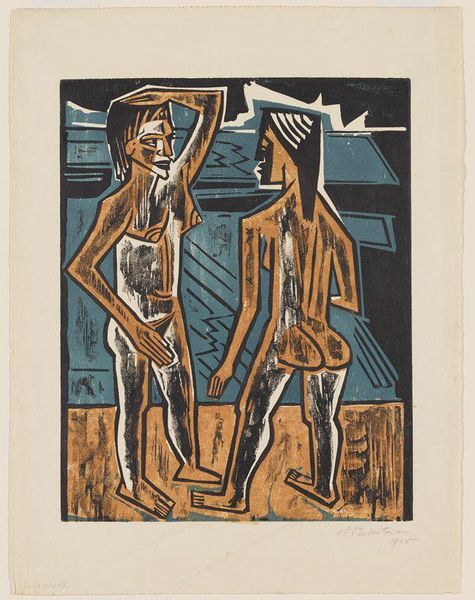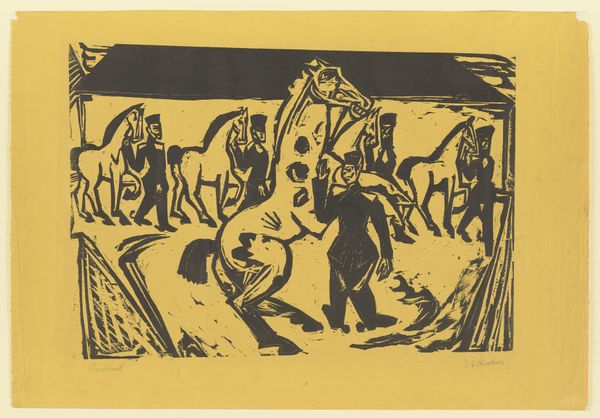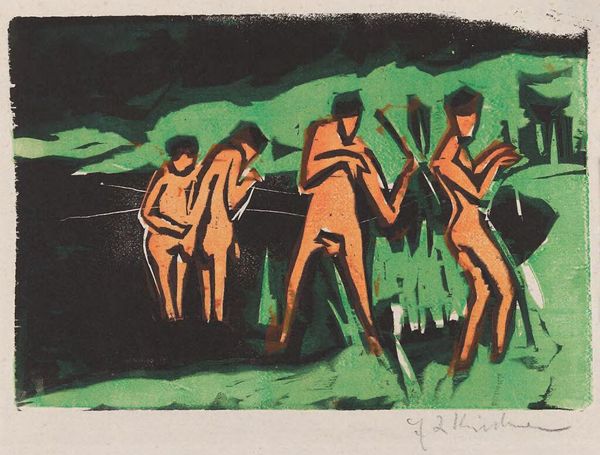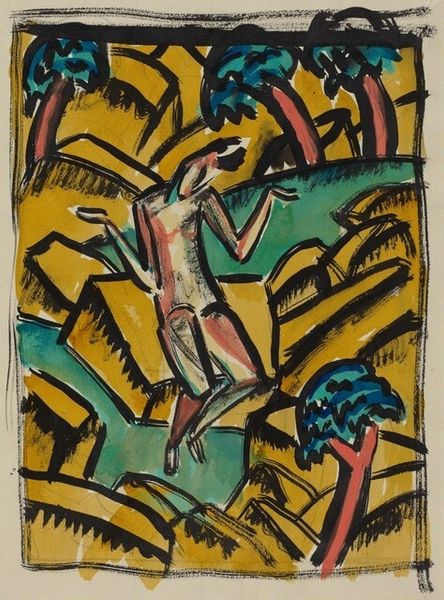
print, woodcut
# print
#
landscape
#
german-expressionism
#
figuration
#
expressionism
#
woodcut
#
nude
Dimensions: image: 22 × 16 cm (8 11/16 × 6 5/16 in.) sheet: 31.7 × 24 cm (12 1/2 × 9 7/16 in.)
Copyright: National Gallery of Art: CC0 1.0
Editor: This is Max Zachmann’s “Two Nude Dancers in a Landscape,” a woodcut print from around 1913. It has a raw energy to it – a little chaotic. What catches your eye about it? Curator: The woodcut medium is immediately significant. Zachmann's choice of this relatively 'low' craft technique challenges traditional academic art. The visible marks of the cutting tool, the deliberate crudeness... these aren't mistakes, but key features. They speak to the artist's labor and decision-making process. What impact do you think this labor has? Editor: It makes the scene more immediate, less idealized. The labor kind of contradicts this subject being graceful, you know, the title talks about dancers? How did people consume prints like this one back then? Curator: Expressionist prints like this were often reproduced in affordable magazines, meaning they circulated outside the traditional elite art world. They were a means of disseminating new, radical artistic ideas and questioning established values. Its materiality reflects democratic consumption. How might the depicted scene also disrupt norms? Editor: Well, the bodies are fragmented, right? Almost brutal in how they’re presented. Nothing soft or elegant. Curator: Exactly! This fragmentation links the piece to broader anxieties around industrialization and alienation within German society. By highlighting these aspects through the material process, Zachmann’s challenges the idea that art must adhere to classical, romantic visions of nature and the human form. So, what do you make of it now? Editor: I see it as something intentionally disruptive. The rough, handmade quality makes it a powerful statement against idealized beauty and the rising dominance of industry. Curator: Precisely. Zachmann transformed a seemingly simple scene into a bold challenge to conventional values and a statement on contemporary social conditions by exploiting the materials and processes.
Comments
No comments
Be the first to comment and join the conversation on the ultimate creative platform.
